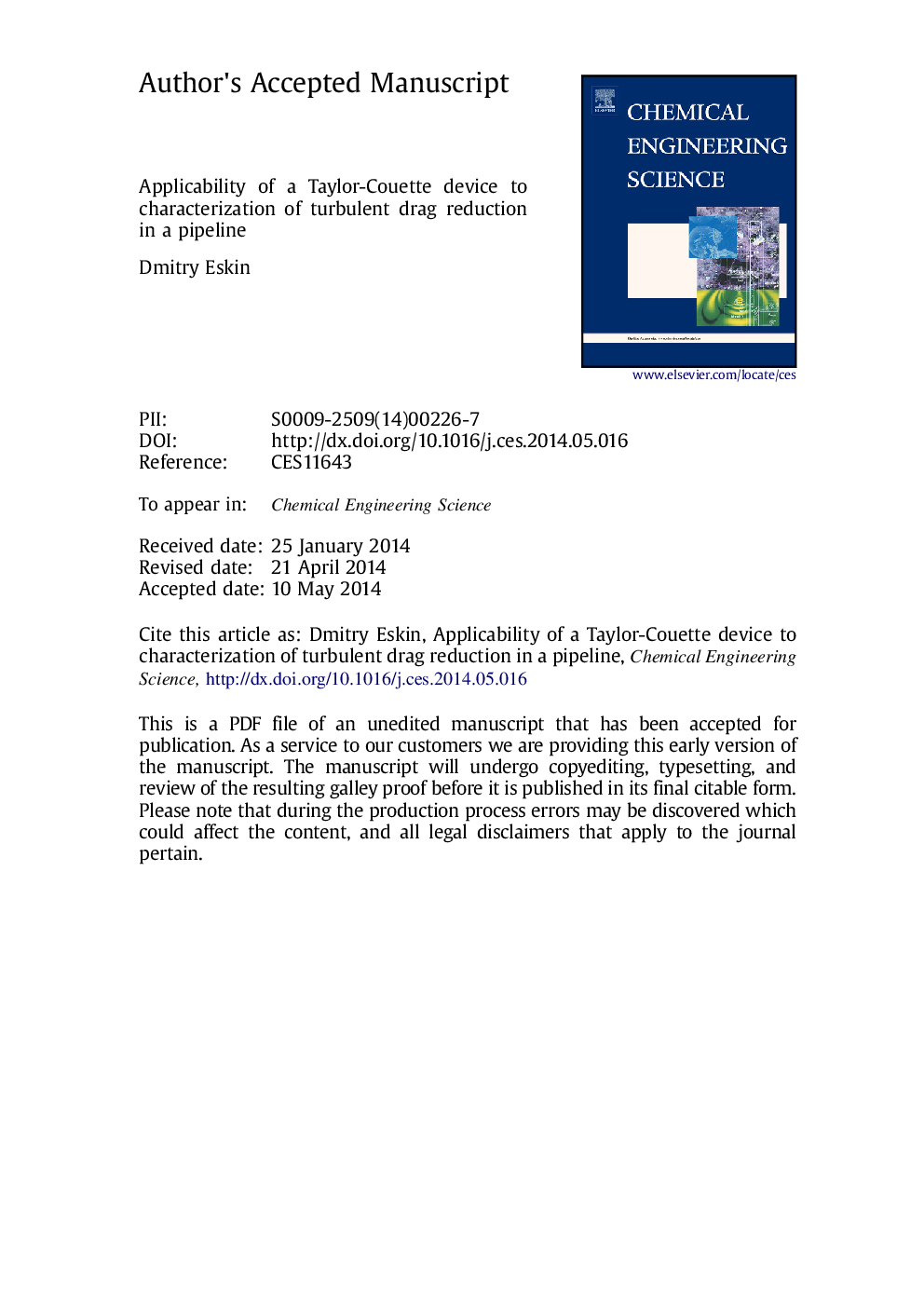| Article ID | Journal | Published Year | Pages | File Type |
|---|---|---|---|---|
| 6591032 | Chemical Engineering Science | 2014 | 36 Pages |
Abstract
A model of turbulent drag reduction in a pipe is developed. The model employs a well-known two layer representation of the boundary layer structure. An approach of Yang and Dou (2010) to model the drag reduction effect, as a phenomenon caused by a non-Newtonian rheology of a viscous sublayer flow, is employed. The modified Prandtl-Karman equation for calculation of the friction factor in a pipe flow of a dilute polymer solution is derived. This equation contains the only empirical parameter that is a function of a polymer type and concentration. The results obtained using the model developed are in a good agreement with those calculated by the Yang and Dou (2010) model, verified against experimental data. An engineering model of a turbulent dilute polymer solution flow in a Couette device is also developed. The same approach to modeling drag reduction as that in a pipe flow is applied. The model allows to compute the dimensionless torque applied to the Couette device rotor as a function of the rotation speed for a given polymer type and concentration. Thus, the empirical parameter, characterizing drag reduction by using a certain polymer additive, can be identified from laboratory Couette device experiments requiring small fluid amounts, and then applied to forecast drag reduction in industrial-scale pipeline flows.
Related Topics
Physical Sciences and Engineering
Chemical Engineering
Chemical Engineering (General)
Authors
Dmitry Eskin,
